
Explore the Rich History at The National Museum of the History of Transylvania
Uncover the captivating stories of Transylvania's past at the National Museum of the History of Transylvania, a treasure trove of cultural heritage.
Immerse yourself in the fascinating past of Transylvania at the National Museum of the History of Transylvania. This museum offers a captivating journey through time, showcasing the region's rich cultural heritage with an impressive collection of artifacts, exhibitions, and historical narratives that bring the story of Transylvania to life. Ideal for history enthusiasts and casual visitors alike, this museum is a must-visit destination in Cluj-Napoca.
A brief summary to The National Museum of the History of Transylvania
- Strada Constantin Daicoviciu 2, Cluj-Napoca, 400000, RO
- +40752108705
- Visit website
Local tips
- Bring a translation app to help navigate the exhibits, as most descriptions are in Romanian.
- Plan your visit during weekdays to avoid weekend crowds and have a more intimate experience.
- Check for any special exhibitions or events happening during your visit for a unique experience.
- Take your time in the museum; there is a lot to absorb and many fascinating stories to discover.
Getting There
-
Car
If you are driving from Sălaj, take DN1H towards Cluj-Napoca. The journey is approximately 1 hour and 30 minutes, depending on traffic. As you approach Cluj-Napoca, follow signs for the city center. Once in the city, navigate to Strada Constantin Daicoviciu. The National Museum of the History of Transylvania is located at number 2 on this street. There may be parking options available nearby, but be prepared for potential parking fees.
-
Public Transportation - Bus
To reach the museum by bus, find the local bus station in Sălaj. Look for a bus that travels to Cluj-Napoca, as multiple lines operate between these locations. The most common bus station for intercity buses in Cluj-Napoca is the Autogara Fany. From there, you will need to take a local bus or tram towards the city center. Disembark at Piata Unirii and walk to Strada Constantin Daicoviciu, which is about a 15-minute walk. Be sure to check the bus timetable for departure times and ticket prices, which may vary.
-
Public Transportation - Train
You can also take a train from the nearest train station in Sălaj. Purchase a ticket to Cluj-Napoca, and the journey typically takes around 1 hour and 45 minutes. Upon arriving at the Cluj-Napoca Train Station, exit the station and find the local bus or taxi services. Take a bus or taxi to Strada Constantin Daicoviciu 2. The taxi ride should take approximately 10 minutes. Be prepared to pay for your train ticket, which varies based on the class of service.
Discover more about The National Museum of the History of Transylvania
Iconic landmarks you can’t miss
Post Office Palace
0.2 km
Explore the Post Office Palace, a neo-Renaissance architectural gem and historical landmark in the heart of Cluj-Napoca, Romania.

Ferdinand I of Romania Plaque
0.3 km
Explore the Ferdinand I of Romania Plaque in Cluj-Napoca, an essential historical landmark that captures Romania's rich cultural heritage and history.

Casa Schleunig (Schleunig House)
0.3 km
Immerse yourself in the architectural beauty of Casa Schleunig, a historical landmark in Cluj-Napoca that captures the essence of Romania's rich heritage.

Turnul Bisericii
0.3 km
Discover breathtaking views and rich history at Turnul Bisericii, Cluj-Napoca's iconic observation deck that showcases the city's charm and beauty.

Cluj-Napoca City Hall
0.4 km
Explore the architectural splendor and historical significance of Cluj-Napoca City Hall, a vital landmark in Romania's vibrant cultural landscape.
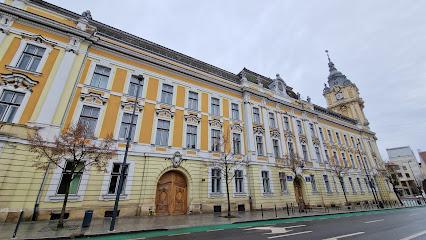
The Shot Pillar Monument
0.4 km
Discover the poignant history of freedom at The Shot Pillar Monument, a must-visit landmark in the vibrant Piața Unirii of Cluj-Napoca.

Premier Theater Memorial Plaque
0.4 km
Explore Cluj-Napoca's artistic heritage at the Premier Theater Memorial Plaque, a historical landmark celebrating the city's vibrant performing arts history.

Sinor Denis House
0.4 km
Explore the architectural beauty and rich history of Sinor Denis House, a captivating historical landmark in Cluj-Napoca, Romania.
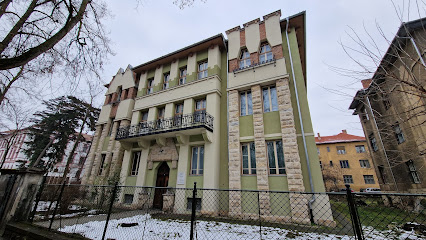
Old House
0.4 km
Explore the Old House in Cluj-Napoca: A captivating historical landmark that tells tales of the past amidst a vibrant local atmosphere.

Piața Mihai Viteazu
0.4 km
Explore Piața Mihai Viteazu in Cluj-Napoca, where rich history meets vibrant local culture and stunning architecture.

Lupa Capitolina
0.5 km
Explore the captivating Lupa Capitolina in Cluj-Napoca, a stunning sculpture that symbolizes the rich cultural ties between Romania and ancient Rome.

Students' Cultural House
0.5 km
Discover the vibrant cultural scene at the Students' Cultural House in Cluj-Napoca, a hub for artistic expression and community gatherings.

Biserica Piaristă Cluj-Napoca
0.5 km
Explore Biserica Piaristă in Cluj-Napoca, a historical Catholic church showcasing stunning Baroque architecture and rich cultural heritage.

Obeliscul Maria
0.6 km
Explore the Obeliscul Maria in Cluj-Napoca, an iconic historical landmark that embodies the spirit of Romania's rich cultural heritage and history.

The Goldsmith's House
0.6 km
Discover the rich history and stunning architecture of The Goldsmith's House, a must-visit historical landmark in Cluj-Napoca.

Unmissable attractions to see
Lapidariu
0.1 km
Explore Lapidariu in Cluj-Napoca, where stone art meets history in a captivating museum experience.

Carolina Obelisk
0.1 km
Explore the Carolina Obelisk in Cluj-Napoca, a stunning monument reflecting the city's rich history and architectural grandeur, perfect for sightseeing and photography.

White Cuib
0.1 km
Explore contemporary art in Cluj-Napoca at White Cuib, a charming gallery that embodies the city's vibrant cultural scene.

Museum Square
0.1 km
Explore Museum Square in Cluj-Napoca, a historical landmark that blends culture, architecture, and vibrant local life for an unforgettable experience.

The House of Matthias Corvinus
0.1 km
Discover the rich history of The House of Matthias Corvinus in Cluj-Napoca, a must-see for culture and history enthusiasts.

Muzeon - Jewish History Museum
0.1 km
Explore the rich Jewish history and cultural heritage at Muzeon - Jewish History Museum in Cluj-Napoca, a captivating experience for every traveler.

Franciscan Temple
0.1 km
Discover the architectural splendor and serene ambiance of the Franciscan Temple, a cherished Catholic church and tourist attraction in Cluj-Napoca.

Matei Corvin
0.2 km
Discover the majestic Matei Corvin, a historic attraction in Cluj-Napoca, showcasing stunning architecture and rich cultural heritage.

Hungarian Opera
0.2 km
Discover the magic of the Hungarian Opera in Cluj-Napoca, where art and culture come alive through breathtaking performances.

Hungarian Theater
0.2 km
Experience the vibrant Hungarian Theater in Cluj-Napoca, a cultural hub offering enchanting performances and rich artistic heritage.
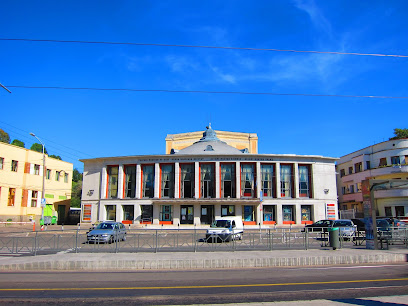
Püspöky-ház
0.2 km
Explore the historical richness and architectural beauty of Püspöky-ház in Cluj-Napoca, a must-visit tourist attraction rich in culture.

Central Park Simion Bărnuțiu
0.2 km
Discover the serene beauty of Central Park Simion Bărnuțiu in Cluj-Napoca, a lush urban oasis perfect for relaxation and outdoor activities.

Reduta Palace
0.3 km
Explore the majestic Reduta Palace in Cluj-Napoca, a historical landmark showcasing the region's rich architectural heritage and cultural significance.

Ethnographical Museum of Transylvania
0.3 km
Explore the Ethnographical Museum of Transylvania: A Cultural Journey Through Traditions and Heritage.

Cluj-Napoca Hintz House
0.3 km
Explore the rich cultural heritage of Cluj-Napoca at the captivating Hintz House museum, a must-visit for every traveler.

Essential places to dine
Epoca Bella
0.1 km
Discover exquisite Romanian cuisine at Epoca Bella in Cluj-Napoca - where tradition meets modern culinary artistry.

Muura Steak House
0.1 km
Experience the ultimate steakhouse dining in Cluj-Napoca at Muura Steak House - where quality meets flavor in every bite.

Tortelli Pasta Bar
0.1 km
Savor handmade pasta and authentic Italian flavors at Tortelli Pasta Bar in Cluj-Napoca - a culinary gem for food enthusiasts.

Jaxx
0.1 km
Experience the best of American cuisine at Jaxx in Cluj-Napoca—where delicious food meets an exciting atmosphere.
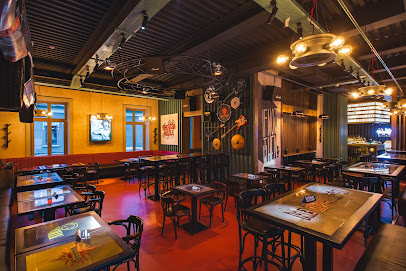
Bistro Viena
0.1 km
Discover the essence of Austrian cuisine at Bistro Viena in Cluj-Napoca - a culinary haven offering delightful dishes in an inviting atmosphere.
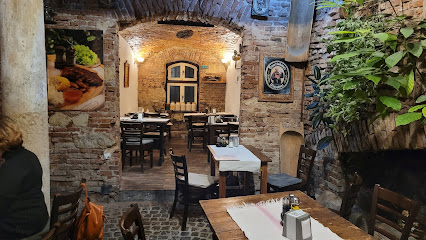
Cimbru Author
0.2 km
Discover exquisite flavors at Cimbru Author, where Cluj-Napoca's culinary heritage meets modern gastronomy in an inviting atmosphere.

Manger
0.2 km
Experience authentic Romanian flavors at Manger in Cluj-Napoca – where tradition meets modern culinary artistry.

Samsara Foodhouse - Cluj restaurant plant-based
0.2 km
Discover the essence of plant-based dining at Samsara Foodhouse in Cluj-Napoca – where health meets flavor in every dish.

A Camponeza - Casa das Espetadas
0.2 km
Discover authentic Portuguese flavors at A Camponeza - Casa das Espetadas in Cluj-Napoca, where every dish tells a story.

Roata
0.2 km
Experience authentic Romanian cuisine at Roata in Cluj-Napoca - where tradition meets taste in a welcoming atmosphere.

Kupaj Gourmet
0.2 km
Savor exceptional culinary creations at Kupaj Gourmet in Cluj-Napoca - where tradition meets innovation.
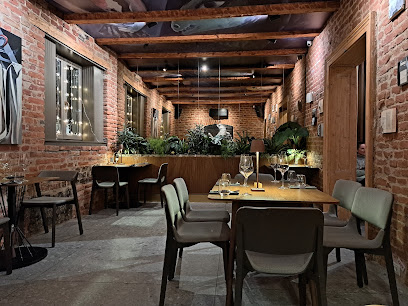
Nuka Bistro
0.3 km
Discover the culinary gems of Cluj-Napoca at Nuka Bistro – where local flavors meet international cuisine in a vibrant setting.

Bujole
0.3 km
Experience the vibrant flavors of Cluj-Napoca at Bujole Bistro – your go-to spot for breakfast, coffee, and fine wines.

Toulouse
0.3 km
Experience authentic flavors at Toulouse in Cluj-Napoca – where local cuisine meets modern culinary artistry.

Divino Porcello
0.4 km
Discover exquisite flavors at Divino Porcello, Cluj-Napoca's premier gastropub offering innovative dishes and a vibrant atmosphere.

Markets, malls and hidden boutiques
Dits Dots Handmade Gifts
0.1 km
Discover unique handmade gifts at Dits Dots in Cluj-Napoca, where creativity meets craftsmanship in a charming shopping experience.

Art Deco Gift & Souvenirs
0.1 km
Explore Art Deco Gift & Souvenirs in Cluj-Napoca for unique gifts and local art that represent the heart of Romanian culture.

Chic Bijoux - Jewelry Shop
0.2 km
Discover Chic Bijoux in Cluj-Napoca, where exquisite handcrafted jewelry meets local artistry, perfect for gifts or a personal indulgence.

Central Shopping Center
0.3 km
Explore Cluj-Napoca's Central Shopping Center for an unforgettable shopping experience filled with local charm and modern amenities.

Chic Ville
0.3 km
Explore Chic Ville, Cluj-Napoca's premier furniture store, featuring quality craftsmanship and stunning designs for every home.

Dr Antiques
0.4 km
Explore timeless treasures at Dr Antiques, a captivating antique store in Cluj-Napoca, where history and craftsmanship meet.

MONOM the concept store
0.4 km
Explore MONOM, Cluj-Napoca's premier concept store for unique jewelry and fashion, celebrating local artistry and creative design.

Amsterdam Shop
0.4 km
Explore Amsterdam Shop in Cluj-Napoca for unique gifts and local crafts that capture the spirit of Romania's vibrant culture.

Sora Shopping Center
0.4 km
Discover the vibrant shopping scene and local culture at Sora Shopping Center in Cluj-Napoca, where every visit is a unique experience.

Leonidas Chocolates Boutique
0.4 km
Discover the finest handcrafted chocolates at Leonidas Chocolates Boutique in Cluj-Napoca, a must-visit for sweet lovers and gift seekers.

Outwear
0.5 km
Explore Outwear, the ultimate clothing store in Cluj-Napoca, blending local and international styles for a unique shopping experience.

Demetra Boutique
0.6 km
Discover the fashion gem of Cluj-Napoca at Demetra Boutique, where stylish dresses meet exceptional quality and personalized service.

Black Fashion Outlet
0.6 km
Explore unique fashion choices at Black Fashion Outlet, where contemporary style meets local charm in Cluj-Napoca.
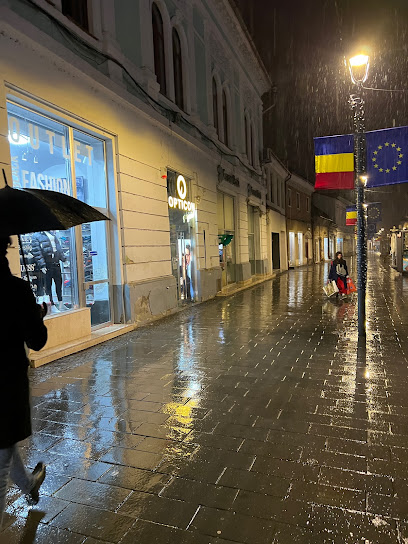
Reuse urban
0.7 km
Explore Reuse Urban in Cluj-Napoca for unique vintage clothing and sustainable fashion finds that tell a story.

Platinia Shopping Center
1.4 km
Explore a shopper's paradise at Platinia Shopping Center, where diverse brands, delightful dining, and entertainment await in Cluj-Napoca.

Essential bars & hidden hideouts
Bardot
0.1 km
Experience the ultimate cocktail bar in Cluj-Napoca, where creativity meets flavor in a vibrant setting perfect for any occasion.

The Soviet
0.1 km
Experience the vibrant atmosphere of The Soviet in Cluj-Napoca, where a cozy pub, café, and cocktail bar await to delight your senses.

Klausen Pubhouse
0.1 km
Discover the vibrant atmosphere and diverse menu at Klausen Pubhouse in Cluj-Napoca, where local culture and culinary delights come together.

Shadow Cafe-Bar
0.1 km
Discover the vibrant atmosphere of Shadow Cafe-Bar in Cluj-Napoca, where delicious drinks and local culture come together in a unique setting.

O'Peter's Irish Pub & Grill
0.1 km
Discover the essence of Ireland at O'Peter's Irish Pub & Grill, where hearty cuisine and a lively atmosphere meet in Cluj-Napoca.

Londoner Pub
0.1 km
Discover the vibrant atmosphere of Londoner Pub in Cluj-Napoca, a lively spot for cocktails, local beers, and unforgettable events.

Hemingway Cocktail Bar
0.2 km
Experience the vibrant nightlife of Cluj-Napoca at Hemingway Cocktail Bar, where expertly crafted cocktails and an inviting ambiance await.

Shto Pub
0.2 km
Experience the vibrant nightlife of Cluj-Napoca at Shto Pub, where delicious cocktails and a lively atmosphere await.

Syndicate Bar
0.3 km
Experience the vibrant cocktail culture at Syndicate Bar in Cluj-Napoca, where innovative drinks and a lively atmosphere await you.

Zorki
0.4 km
Experience the vibrant nightlife at Zorki, Cluj-Napoca's beloved pub offering craft drinks and a lively atmosphere for social gatherings.

Irish & Music Pub
0.4 km
Discover the vibrant Irish & Music Pub in Cluj-Napoca, where authentic cuisine meets lively music in a warm and inviting atmosphere.

Insomnia
0.4 km
Experience the artistic culinary journey at Insomnia, a vibrant bistro in Cluj-Napoca featuring Indian cuisine, pizzas, and live jazz music.

Hubertus New Age, Restaurant & Lounge
0.5 km
Discover the exquisite flavors of Romania at Hubertus New Age, a premier restaurant and lounge in the heart of Cluj-Napoca.

The Brewhouse
0.5 km
Discover the vibrant craft beer scene at The Brewhouse in Cluj-Napoca, where quality brews and a cozy atmosphere await you.

Beer Wall Café
0.5 km
Experience the vibrant craft beer culture at Beer Wall Café in Cluj-Napoca, where flavor meets community in a cozy atmosphere.




